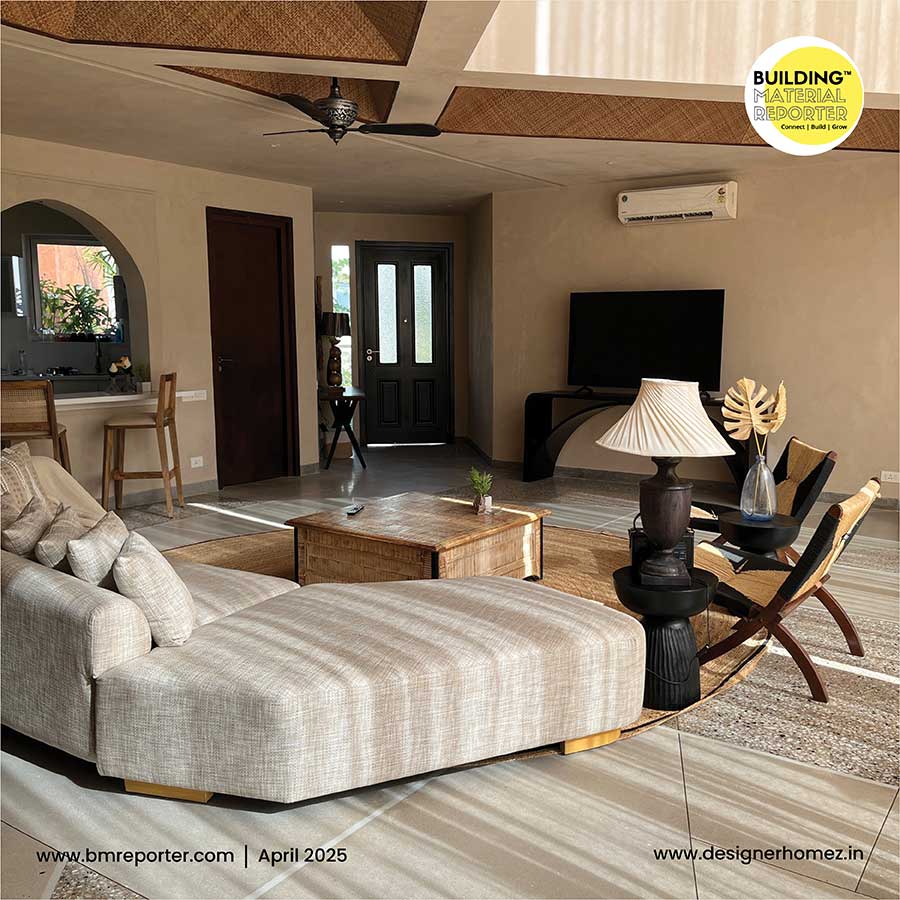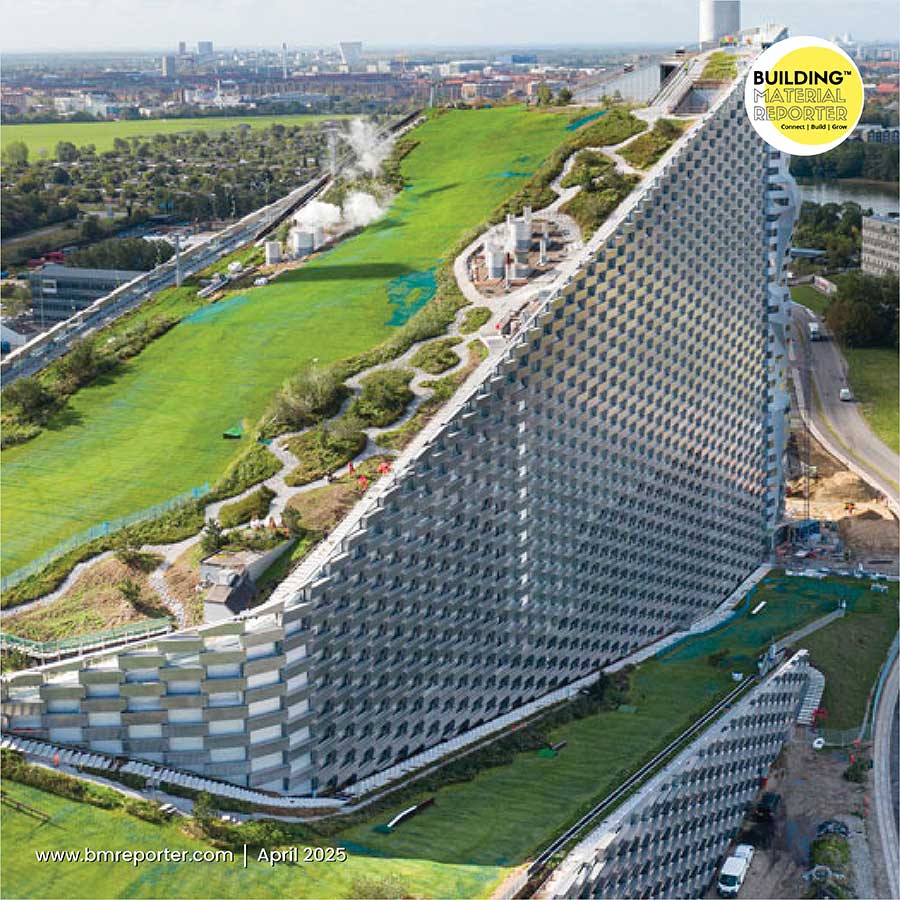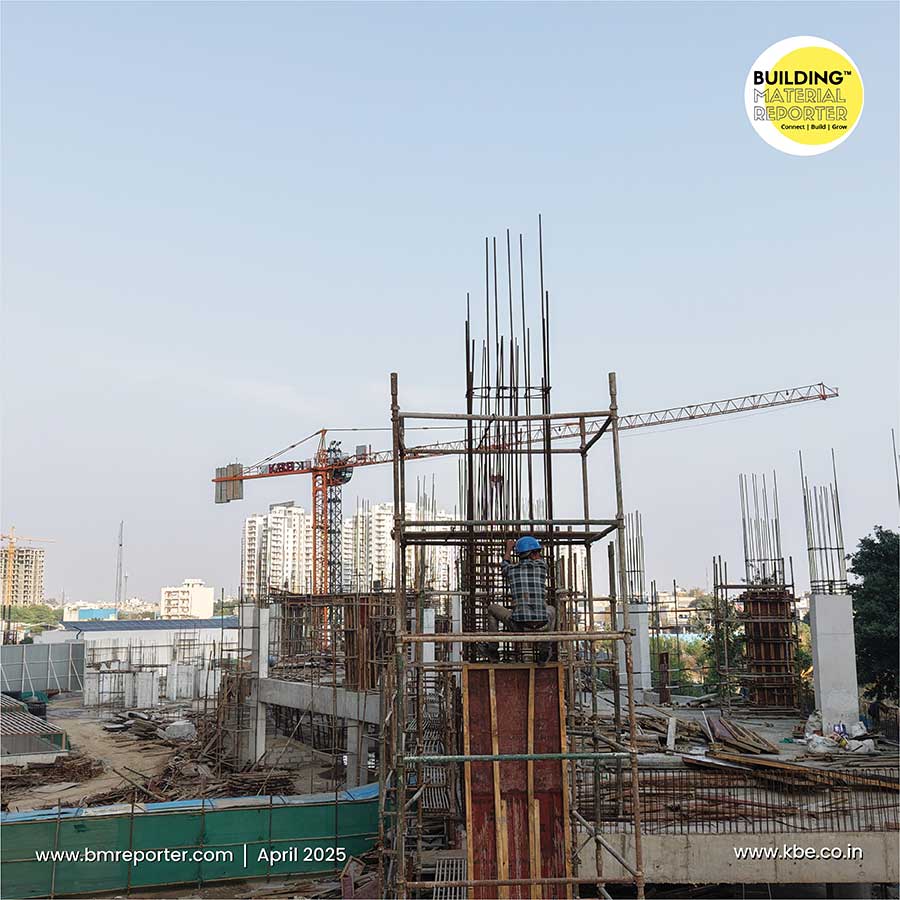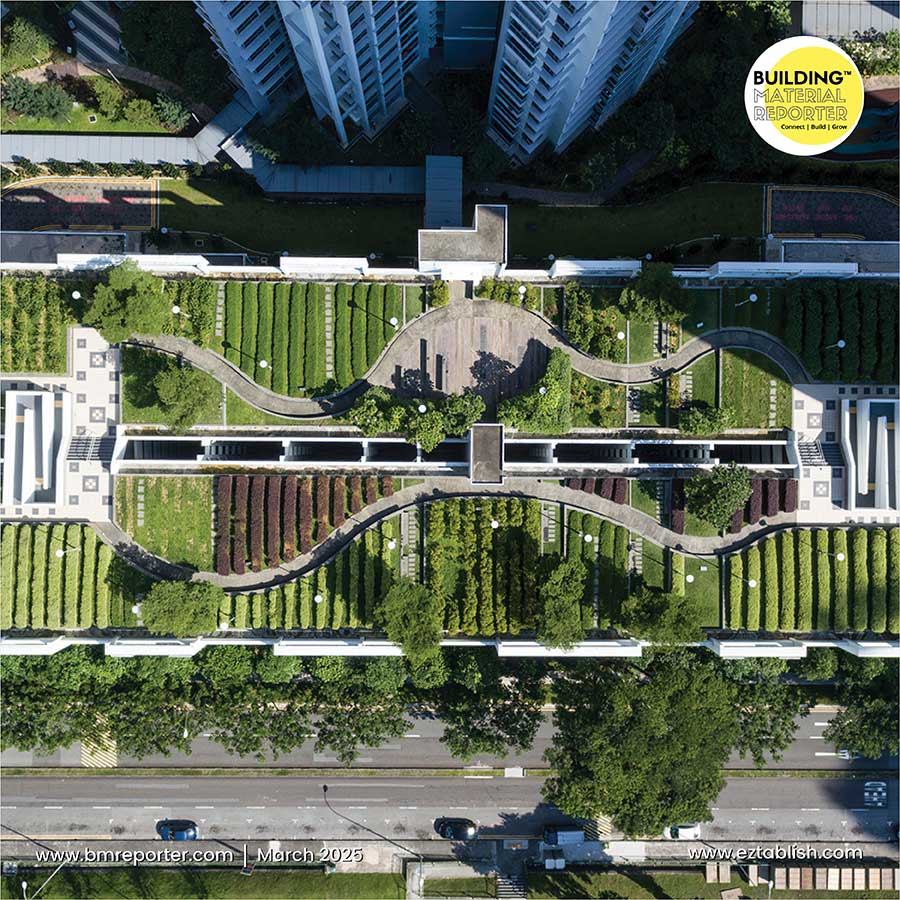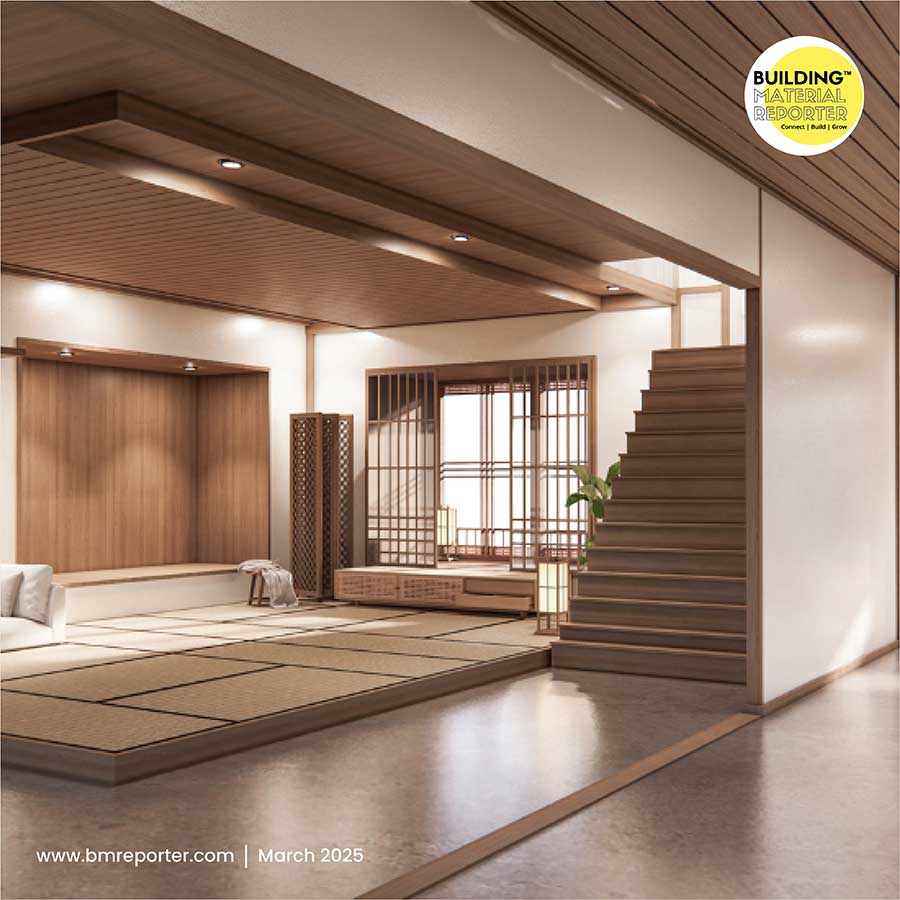Material-Centric Design: Transforming Modern Architecture
- December 23, 2024
- By: Ar. Priyanshi Shah
- INFLUENCERS
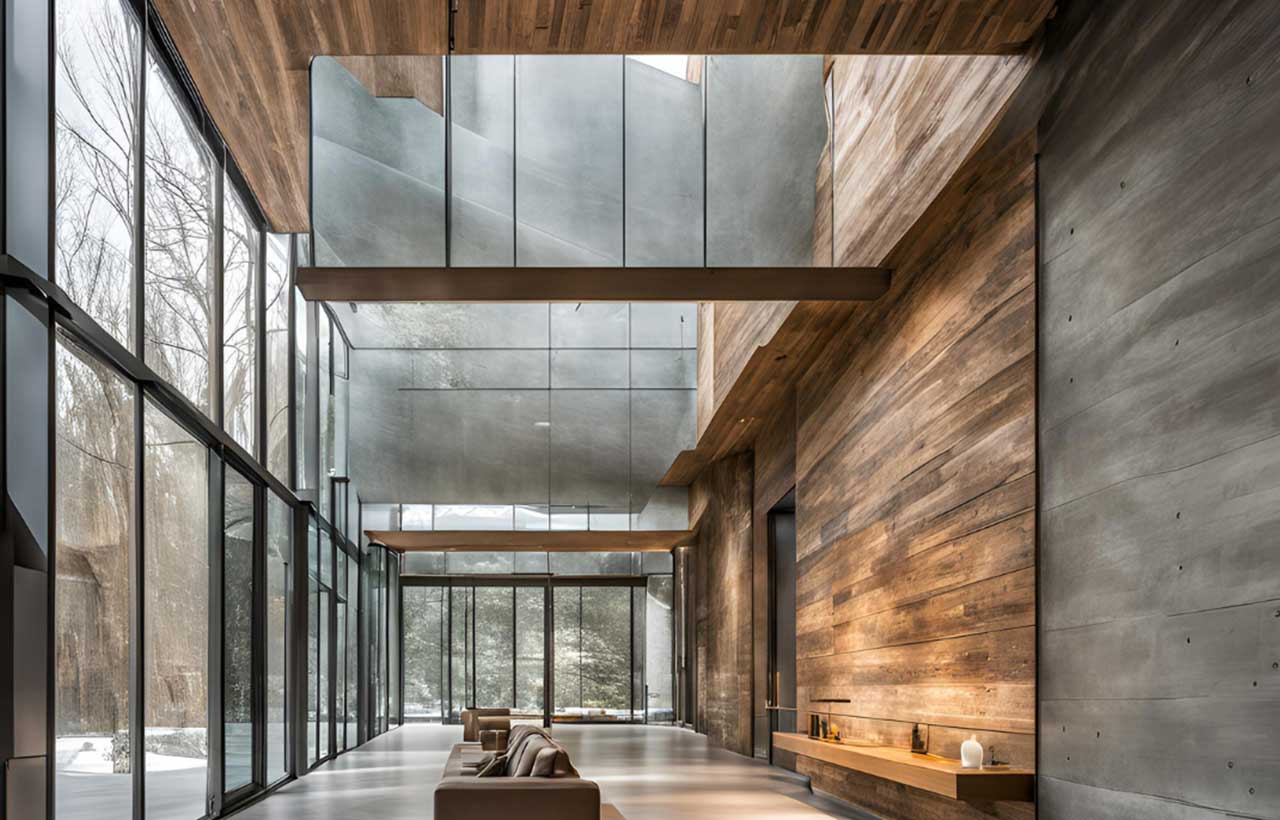 Imagine a world, where art and architecture adapt and coexist to create a harmonious environment with a thoughtful selection of building materials, a user-centric design approach and functional spaces. In this compelling building material reporter's narrative, materials take the central space resulting in modern architecture shaping how we live and interact with the surroundings. At the peak of architectural innovation, the material-centric design approach focuses on the structure’s thoughtful selection, sustainable features and carbon footprint. From skyscrapers to cosy interiors, the conscious choice of materials influences the user’s visual aesthetics and mental well-being.
Imagine a world, where art and architecture adapt and coexist to create a harmonious environment with a thoughtful selection of building materials, a user-centric design approach and functional spaces. In this compelling building material reporter's narrative, materials take the central space resulting in modern architecture shaping how we live and interact with the surroundings. At the peak of architectural innovation, the material-centric design approach focuses on the structure’s thoughtful selection, sustainable features and carbon footprint. From skyscrapers to cosy interiors, the conscious choice of materials influences the user’s visual aesthetics and mental well-being.
Defining Material-Centric Design: Material-centric design shapes the surroundings, using eco-friendly approaches to create sustainable and green buildings with the clever choice of building materials, properties and innovative techniques. The buildings are not only visually appealing but self-sustaining, durable and functional.
Importance in Modern Architecture: Times have changed and the modern era demands innovation and responsibility to battle against environmental challenges and rapid urbanization. By using sustainable materials and eco-friendly construction techniques, architects and designers can redefine how spaces interact with inhabitants. In this building material reporter guide, let's delve into the growing demand for green building features and smart design that defines modern architecture with a sensitive strategy.
Historical Perspective
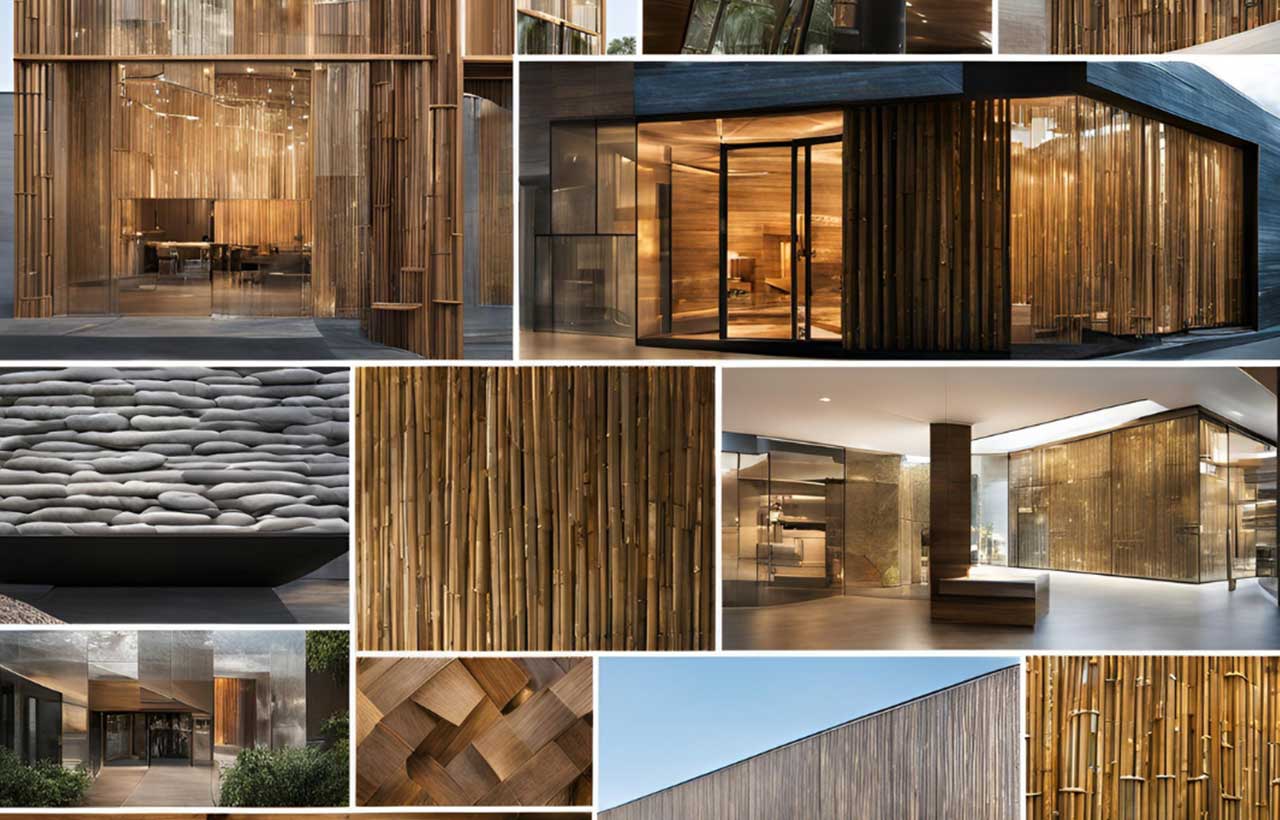 Early Uses of Materials in Architecture: In India, the context and environment shape the building design. One can see in the ancient monumental structures such as the rock-cut caves of Ajanta or Ellora, the craft of stone to carve intricate details emphasising the cultural significance and material innovation.
Early Uses of Materials in Architecture: In India, the context and environment shape the building design. One can see in the ancient monumental structures such as the rock-cut caves of Ajanta or Ellora, the craft of stone to carve intricate details emphasising the cultural significance and material innovation.
Key Milestones in Architectural Material Innovation: The rise of modern architecture started after the Post-independence era and Industrial Revolution with a significant leap with advances in the steel and concrete industry. The visionary Le Corbusier-shaped ATMA building introduced reinforced concrete acting as the modern architectural expression. In today’s time, designers prefer bamboo, sandbags or self-healing concrete to balance the culture, tradition and innovation.
Core Principles of Material-Centric Design
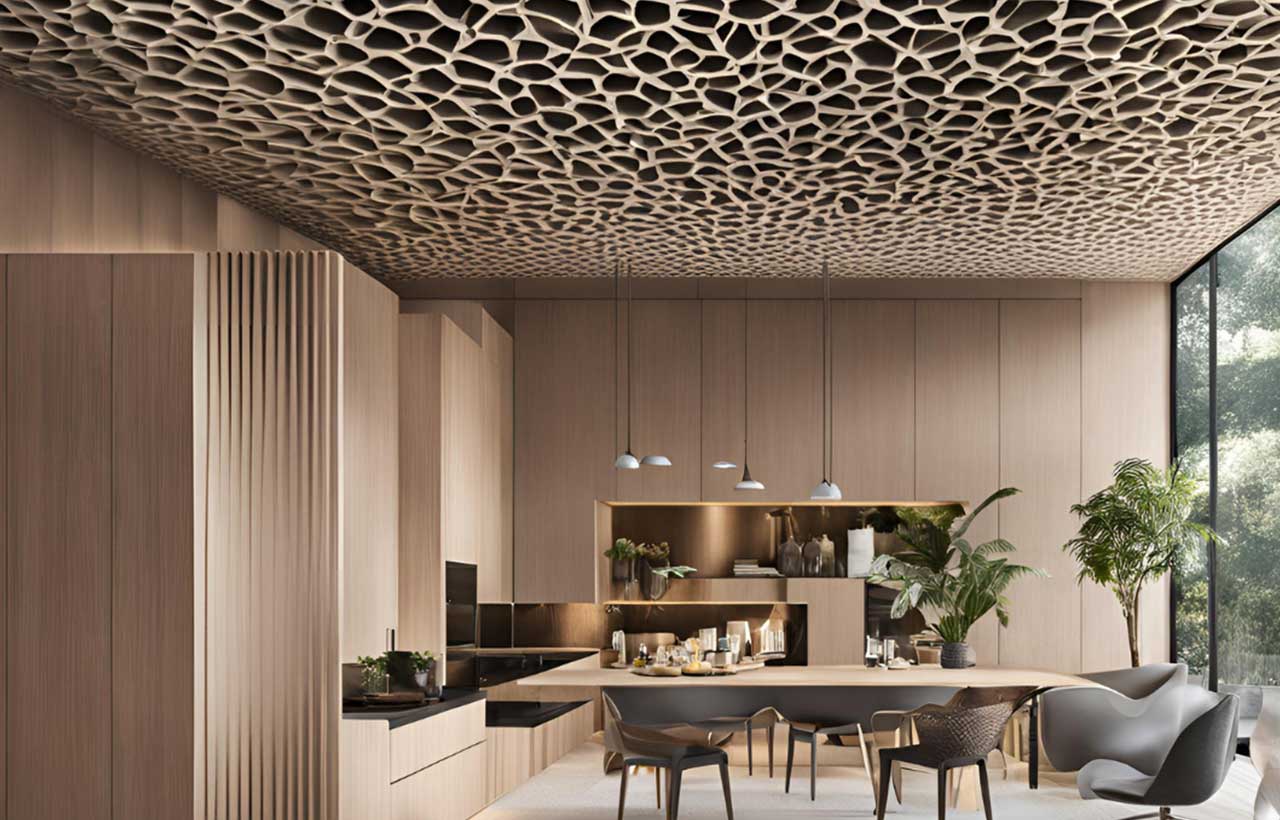 Sustainability and Eco-Friendliness: Sustainability and eco-friendly materials with the use of smart technologies, net zero savings and energy-saving techniques balance humanitarian architecture.
Sustainability and Eco-Friendliness: Sustainability and eco-friendly materials with the use of smart technologies, net zero savings and energy-saving techniques balance humanitarian architecture.
Renewable Resources: For eco-conscious design, the important factors to consider are durability, renewable and strength. There is a significant growth rate of the use of bamboo in building construction, especially in north-east india for eco-conscious design.
Recycled and Upcycled Materials: To build is to create waste, so nowadays designers are transforming it into architectural resources such as recycled plastics and composite materials, reducing the burden on landfills.
Durability and Longevity: Let's delve into the importance of a material’s lifespan, pros and cons, Furniture and Design and strength as a building material.
- Strength and Resilience: The strength and resilience of the structure depend on the durability of materials such as Cross-laminated timber (CLT) and self-healing concrete ensuring environmentally friendly.
- Maintenance and Lifecycle Costs: Lifecycle efficiency is another characteristic of long-term maintenance and Low-carbon concrete minimizes environmental impact. Material-centric designs result in long-term maintenance.
Aesthetic Appeal: The visual aspect impacts the overall design. Let's delve into the importance of material aesthetics.
- Visual Harmony and Texture: The building materials and the interplay of light and shadow create a cohesive modern interior and give a dynamic visual look. To achieve visual harmony, it is important to choose a specific colour depending on the decor, texture such as polished stone or fluted panels, furnishings or concept of the design.
- Colour and Pattern Choices: Smart design with innovative materials gives designers the flexibility to control lights, temperature and overall look of the room. The smart glass allows dynamic control over light and temperature offering sustainable and customizing options influencing the ambience and aesthetic of the space.
Modern Materials Transforming Architecture
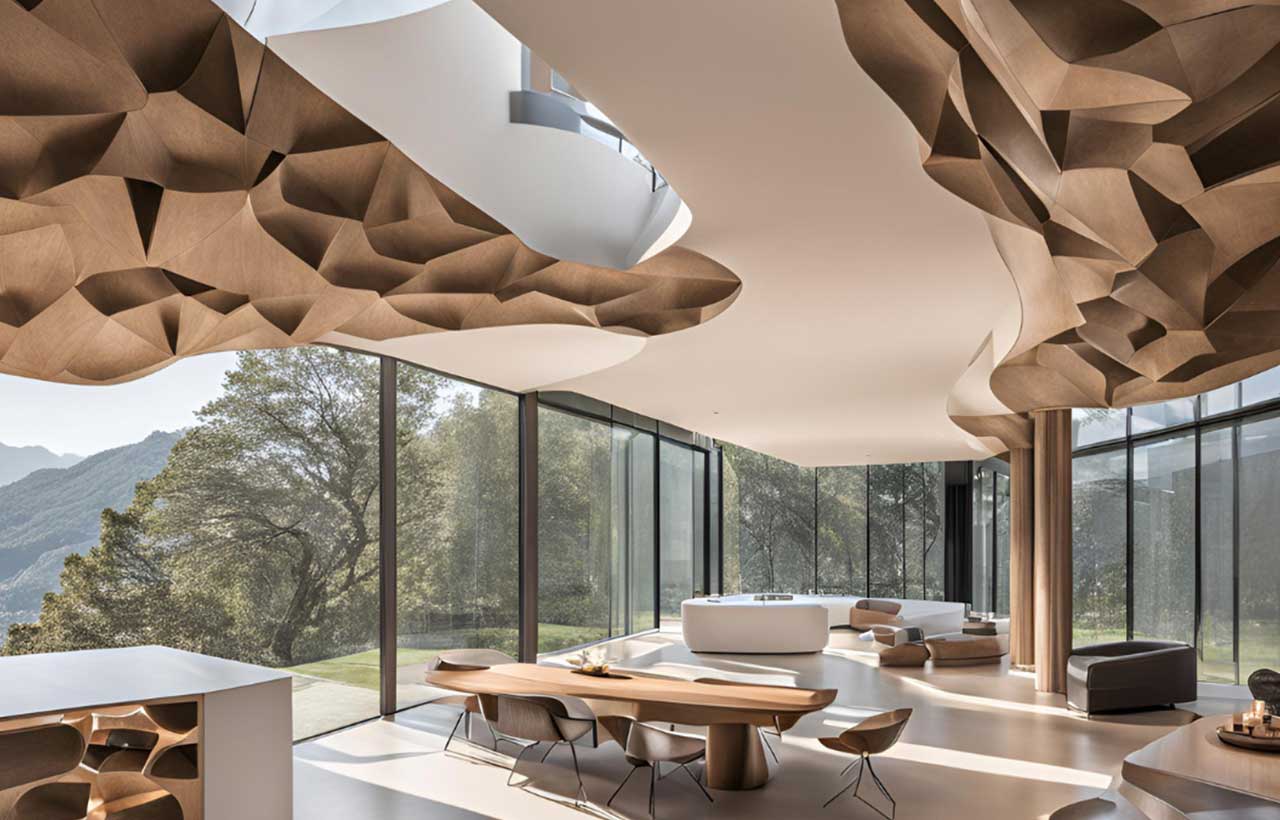 Check out Modern Materials Transforming Architecture and the core principle for material-centric designs. The use of Construction Technology and Furniture and Lighting can transform into smart design.
Check out Modern Materials Transforming Architecture and the core principle for material-centric designs. The use of Construction Technology and Furniture and Lighting can transform into smart design.
Innovative Building Materials: With recent technological advancements, various smart and innovative materials can be the language of architecture such as bio-synthetic materials, eco-friendly, technologically advanced and green building techniques.
Smart Glass and Windows: For energy-efficient lighting and temperature control, smart glass technologies transform structures into responsive entities.
Recycled Plastic and Composite Materials: The future era is about revival, innovative recycling materials and techniques are diverting waste plastics into stable, high-performance building construction materials.
Cross-Laminated Timber (CLT): A sustainable choice for local timber is CLT, a durable, strong and vibrant look.
- Bamboo and Hemp: Bamboo being the local material, is available in abundance and due to its aesthetic and flexible properties it is used for eco-friendly design.
- Low-Carbon Concrete: To retain structural virtue, low-carbon concrete represents it as a smart material reducing carbon emissions and maintaining environmental guidelines.
Technologically Advanced Materials
- Self-Healing Concrete: The technologically advanced material, With the ability to repair itself, is the self-healing concrete that redefines maintenance and durability.
- Phase-Change Materials (PCM): With the use of PCM, the Sustainable interior's indoor temperatures can be controlled and remove heat reducing 50%energy consumption.
Case Studies of Material-Centric Design
The Lotus Temple – Fariborz Sahba
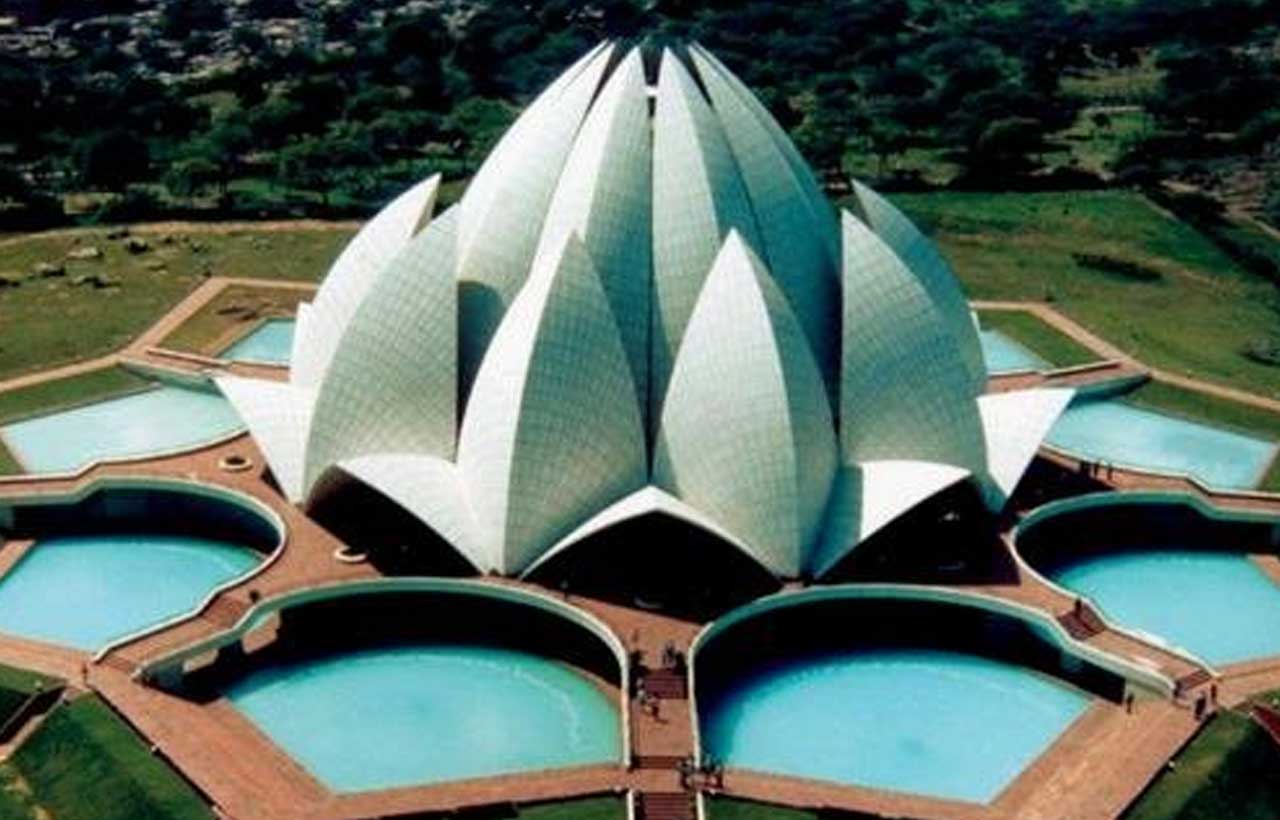 Location: New Delhi, India
Location: New Delhi, India
Materials: White Marble
The Bahai House of Worship was inspired by the lotus flower and constructed using white marble for its purity and symbolic significance providing durability and long-enduring impact. The choice of the material-centric design highlights the lightness and serenity of the worship places and reflects the temple’s aesthetic appeal and spiritual ethos.
Amdavad ni Gufa – Balkrishna Doshi
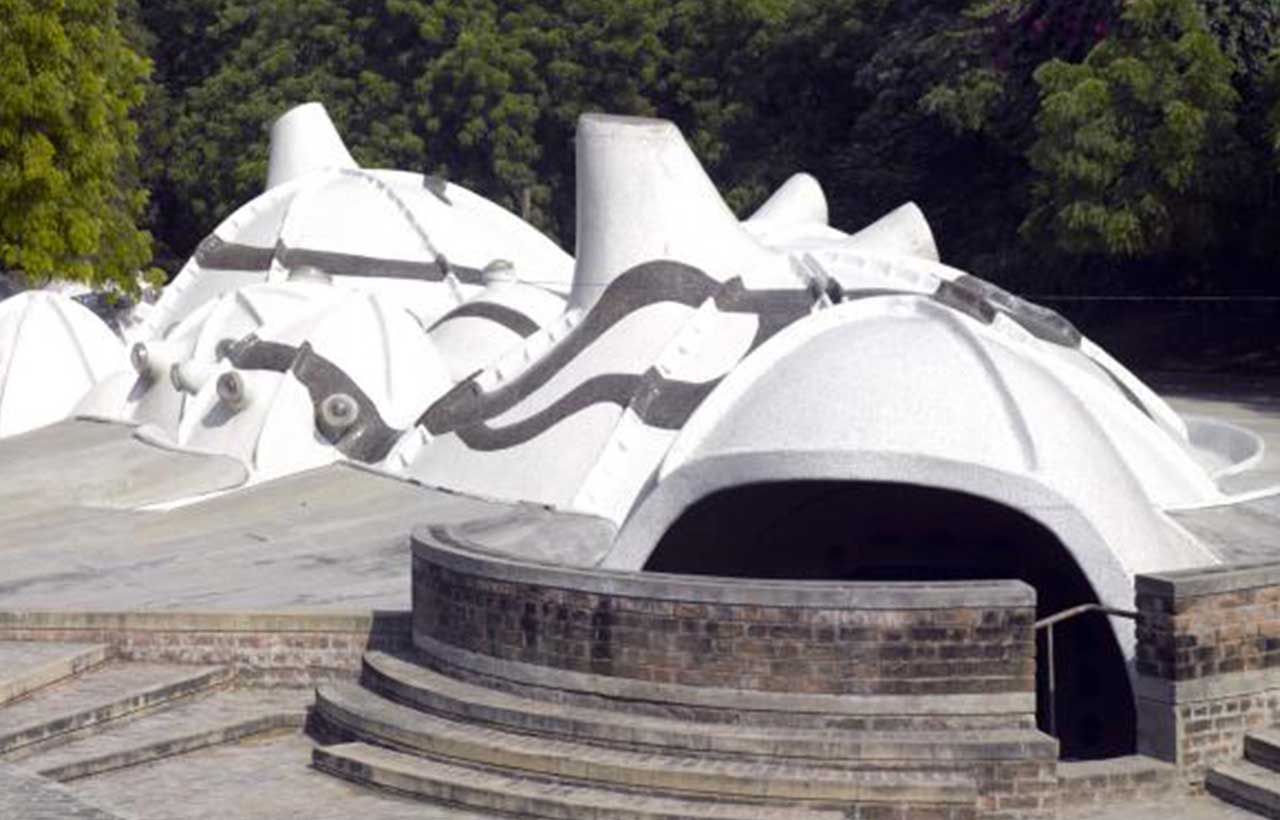 Location: Ahmedabad, Gujarat
Location: Ahmedabad, Gujarat
Materials: Ferrocement, Mosaic Tiles, and Glass
The Pritzker award winner Balakrishna Doshi designer Ahmedabad ni Gufa, the underground art gallery constructed with ferrocement as a free-flowing form, reducing the use of material while enhancing durability and creating pockets of interactive spaces above. The design reflects the interplay of light, shadow and material adorned with mosaic tiles creating a dynamic organic form.
Sharanam Rural Development Centre - Auroville Earth Institute
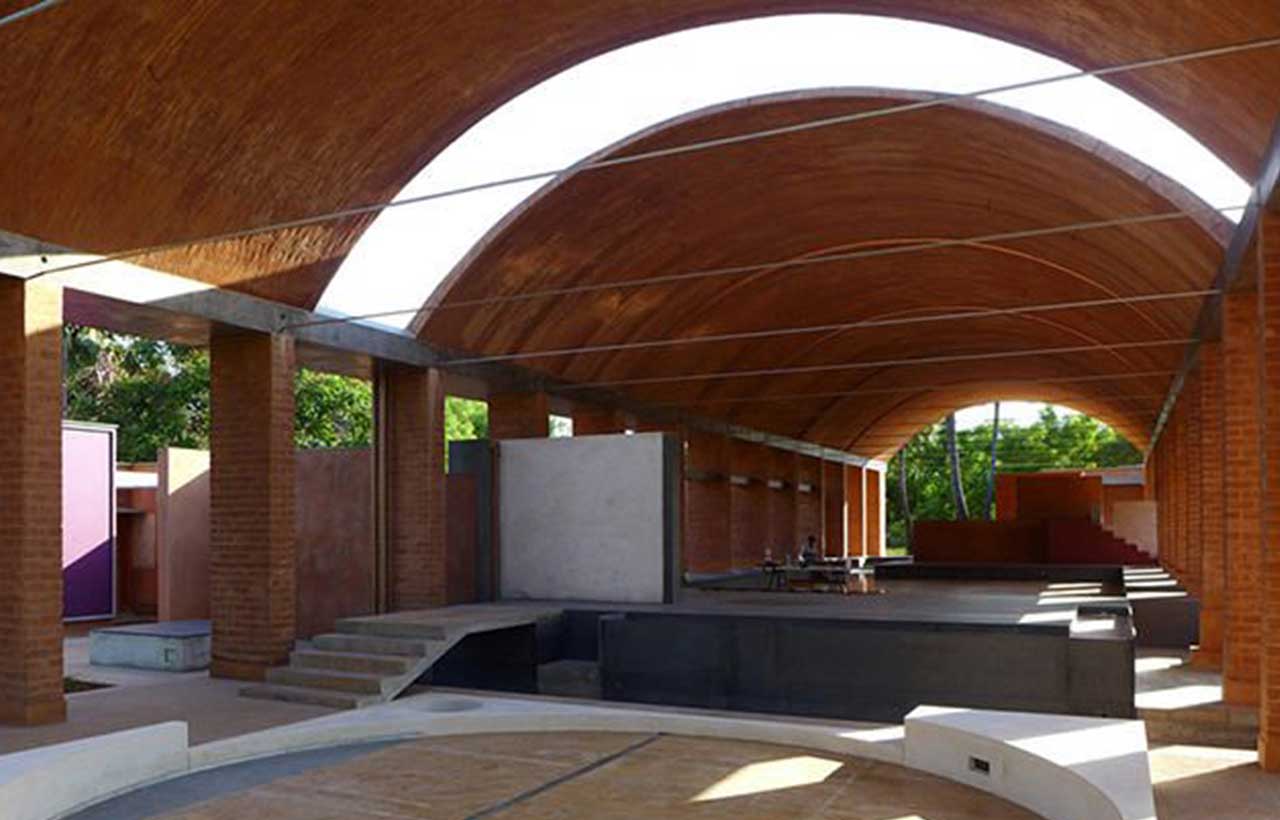 Location: Pondicherry, Tamil Nadu
Location: Pondicherry, Tamil Nadu
Key Materials Used: Stabilized mud blocks, recycled materials
The building features an eco-conscious design and was constructed with the use of Compressed Stabilized Earth Blocks (CSEBs) as a sustainable and affordable material-centric design. Rainwater harvesting systems and sourced local materials with natural light and ventilation result in a minimal environmental footprint reducing energy consumption.
The Krushi Bhawan - Studio Lotus
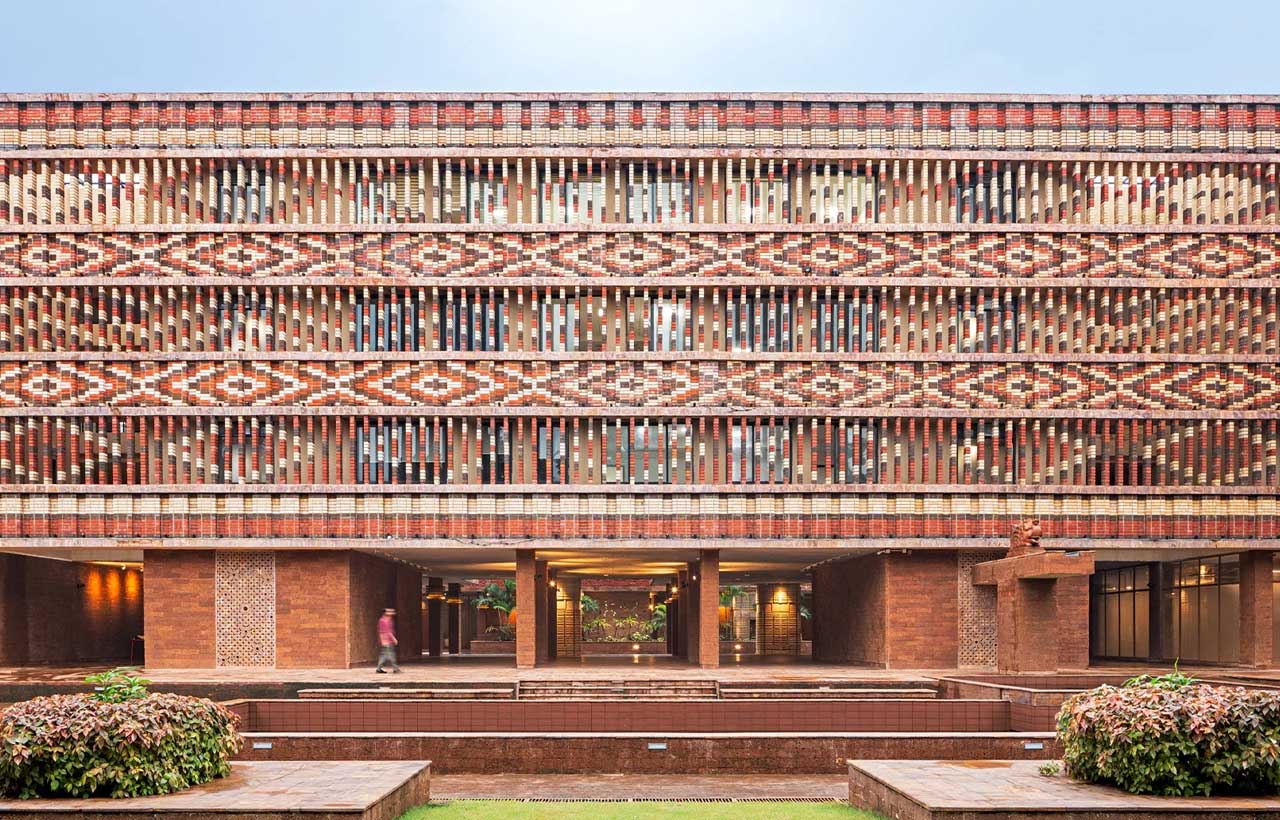 Location: Bhubaneswar, Odisha
Location: Bhubaneswar, Odisha
Key Materials Used: Laterite stone, bamboo, terracotta
Designed by Studio Lotus, this green building structure celebrates craftsmanship and vernacular architecture with the use of passive cooling techniques, jaalis and central courtyards enhancing the revival of traditional craftsmanship.
Lodha World One - Pei Cobb Freed & Partners
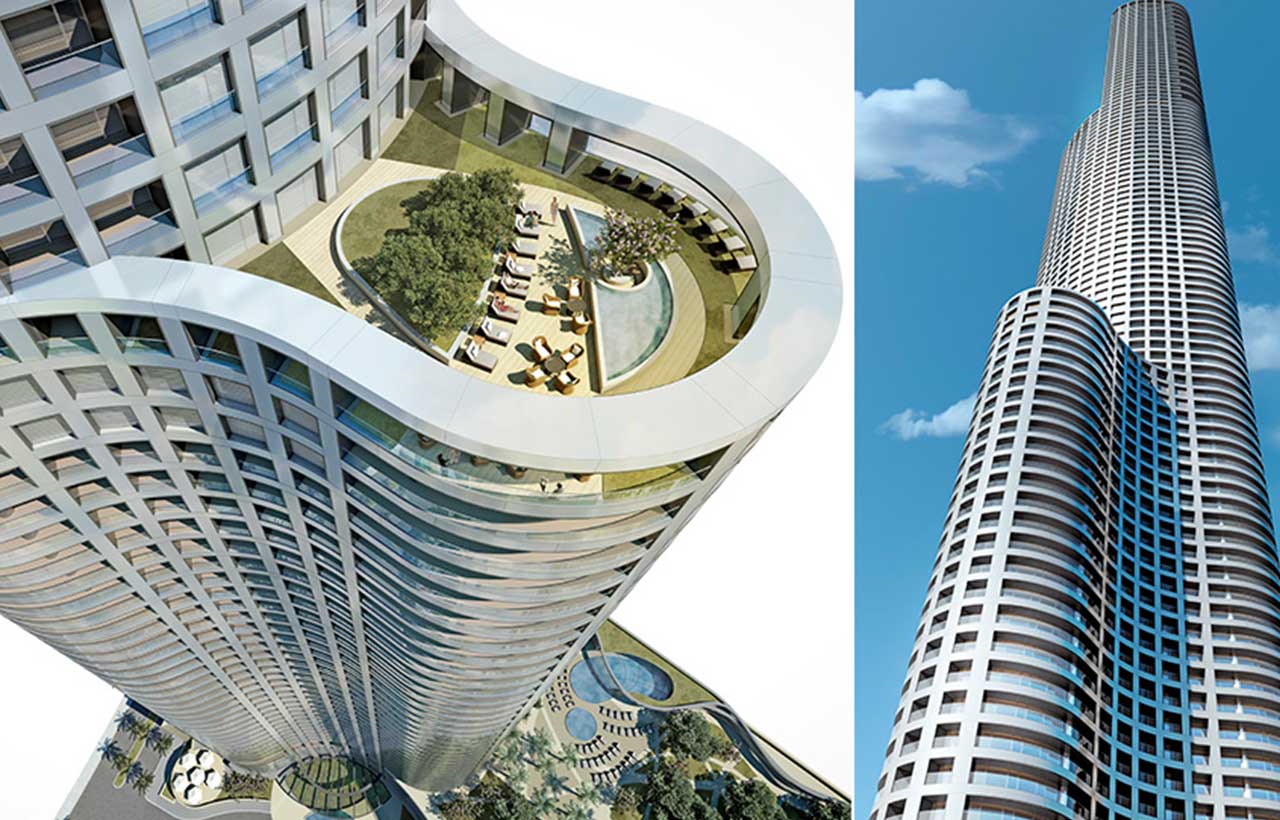 Location: Mumbai, Maharashtra
Location: Mumbai, Maharashtra
Key Materials Used: Steel, glass, concrete
Part of futuristic designs, it is known as one of the tallest skyscrapers that incorporate green building codes, waste management systems and renewable energy strategies. A curved glass facade constructed with advanced post-tensioned concrete slabs allows for column-free spaces and greater flexibility in the panoramic views
Infosys SDB 3 Tower - Morphogenesis
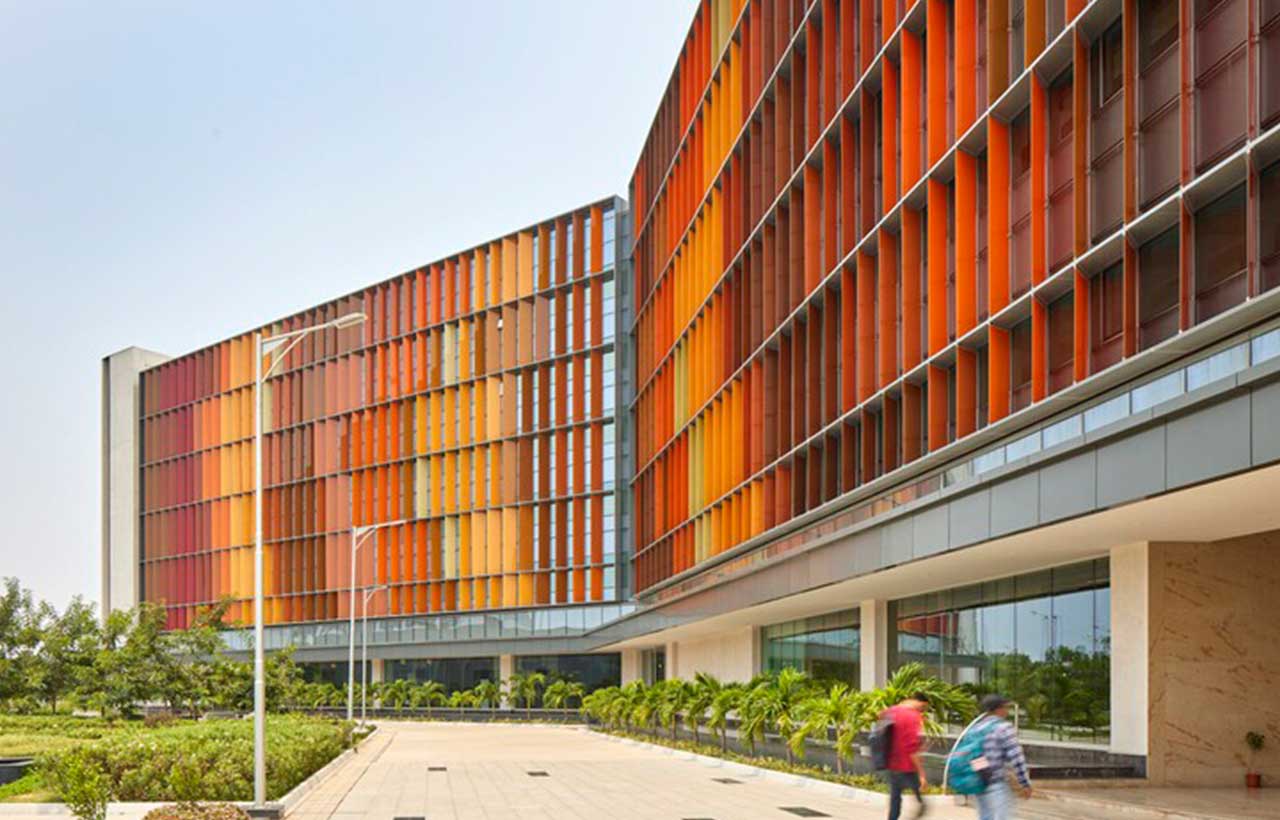 Location: Pune, Maharashtra
Location: Pune, Maharashtra
Key Materials Used: Steel, glass, composite materials
With the use of smart building techniques, BIM technologies and parametric design, this office building uses lightweight composite materials reducing structural load, The integration of smart building systems controls lighting, and HVAC and reduces energy consumption improving thermal comfort.
Lessons Learned from Pioneering Designs: With collaboration between various agencies, stakeholders and architects, the projects overcome challenges and execution. With the adaptive use of materials and considering the context, the designs can preserve cultural heritage while embracing modern efficiency. These projects spotlight the conscious choice of material selection, thoughtful execution and collaboration fostering innovation and new technologies that transform architectural designs.
Benefits of Material-Centric Design
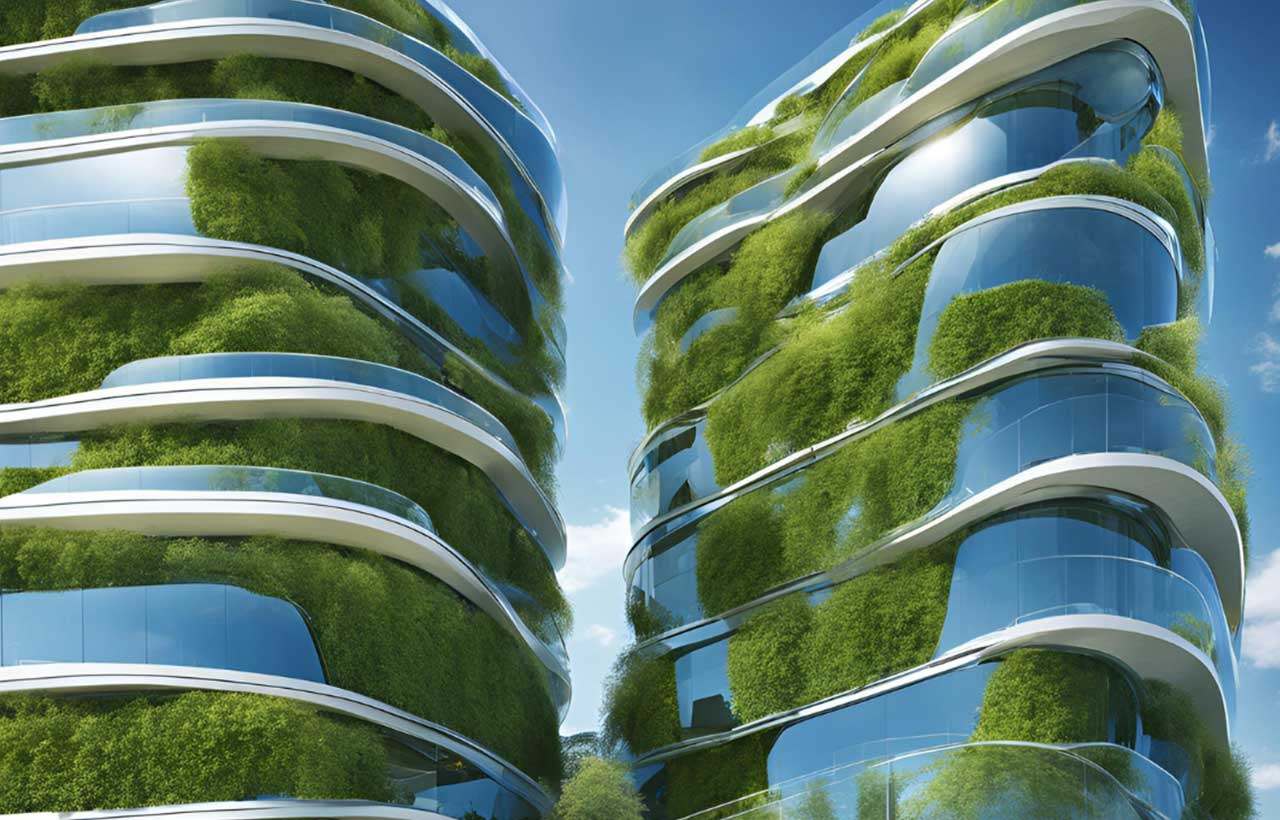 Let's delve into the benefits of a material’s carbon footprint and how it promotes biodiversity, economic advantages and enhancing the human experience.
Let's delve into the benefits of a material’s carbon footprint and how it promotes biodiversity, economic advantages and enhancing the human experience.
Reducing Carbon Footprint: The major task for the designers is to reduce carbon footprint and there are various ways but by integrating low-carbon materials and green building techniques it can contribute to a safer environment.
Promoting Biodiversity: Blending inside and outside spaces, and connecting nature with the built form improves mental well-being and the use of eco-conscious materials like hempcrete fosters harmony between built and natural conditions.
- Cost Efficiency and Savings: While designing, the overall cost may be higher compared with the use of conventional materials but sustainable materials present long-term savings through reduced energy and maintenance expenses.
- Market Demand for Sustainable Buildings: With increasing social and conscious awareness, the market for sustainable architecture continues to grow, guided by user preferences and government policies.
Enhancing Human Experience
- Improved Indoor Air Quality: The interior decor and visual aesthetics are affected by the materials selected, like clay and lime plaster naturally purify the air, improving occupant well-being.
- Natural Light and Energy Efficiency: The spaces should be well-lit and functional with the integration of smart glass and LED lighting trends to optimise energy use while constructing uplifting backgrounds.
Challenges and Considerations
Let's delve into the economics of the material, challenges, technological and construction limitations and predictions for Future Architectural Practices
High Initial Costs and Investment: Eco-friendly designs and sustainable materials require a large amount of investment considering the future benefits and challenges
Availability of Sustainable Materials: India has a diverse land and culture impacting the architecture of the region. The use of available sustainable local materials reduces transportation costs and production.
Technological and Construction Limitations
- Adapting to New Technologies: With the help and advancements in BIM construction technologies, the integration of cutting-edge materials like PCMs requires updates in building techniques and workflows.
- Training and Skill Development: Labours are the soul of the building construction and it is important to teach and help them to learn new techniques and methodologies to harness the potential of innovative materials.
Predictions for Future Architectural Practices
- Integration of AI and Automation: Smart automation systems with Artificial intelligence integration can revolutionize material selection, optimizing designs for sustainability and performance.
- Focus on Resilient and Adaptive Design: With climate change, mass production and AI integration the future of design will change and adapt to climate challenges, ensuring long-term sustainability.
Conclusion
The integration of material-centric design impacts modern architecture representing the confluence of sustainability, innovation and human-centric architecture. The future should respond to the user’s needs and create a sensitive architectural space by embracing green building codes, innovative 3D printed furniture and cutting-edge technologies that echo environmental concerns but also redefine the aesthetic and functional possibilities of modern architecture.
Frequently Asked Questions (FAQs)
What is material-centric design in architecture?
The use of eco-friendly materials, and local techniques and reviving the traditional craftsmanship impacts low energy consumption spaces and enhances the lifestyle of the users defining the material-centric architecture.
How do innovative materials impact modern architecture?
By understanding material properties, forming a structural grid, organic flow of spaces, prioritizing functional spaces and improving the physical and mental well-being of the inhabitants
What are the benefits of using eco-friendly materials in architecture?
The inside and outside environment blends with the use of innovative materials, green building features and sustainability as a core philosophy of the eco-friendly design.


